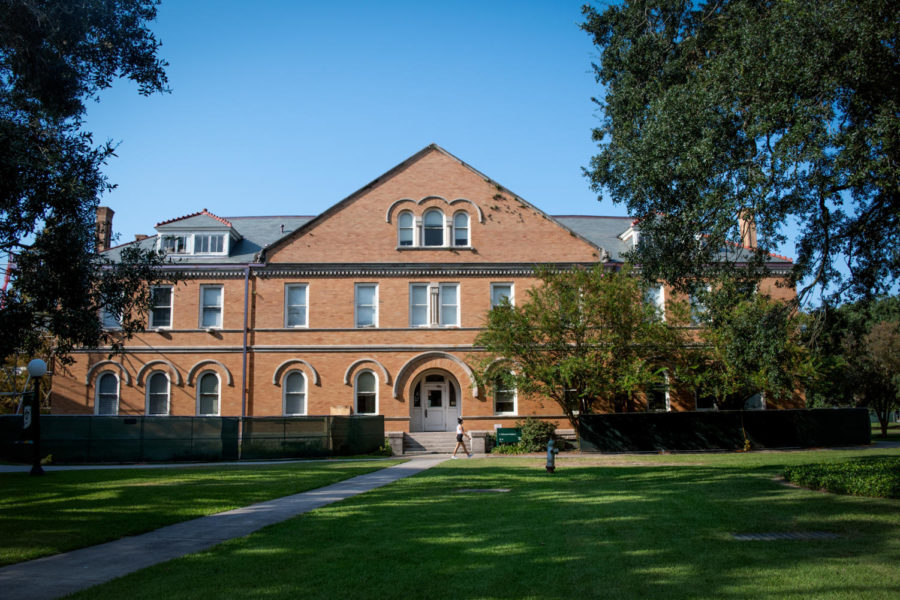Hebert Hall controversy leaves faculty, students disappointed
October 28, 2022

After decades of student and faculty efforts to rename F. Edward Hebert Hall, President Mike Fitts released a university-wide email on Sept. 27 concluding that the administration was unable to reach an agreement with the F. Edward Hébert Foundation to rename the history building. Instead, they resolved to name spaces within the building for members of underrepresented communities in the school’s history and prominently feature historical facts about Hébert.
“The claim is that the cost of getting the Family Foundation to rescind the contract … was too high,” Justin Wolfe, associate professor of history, said. “And that the university would be better off using that money elsewhere, perhaps to support [equity, diversity and inclusion] initiatives.”
Since the building was first named in the 1970s, faculty and students have been opposed to the name. Hébert was a vocal segregationist during his time in congress as a Louisiana representative, and in 1978, shortly after the naming, the history department wrote to a local paper to express their discontent.
“Some of us are concerned about having this close association with Hébert…. What would our black constituency think?” former history professor Charles Till Davis wrote in 1978.
Faculty today said they are still unhappy with the lack of movement on renaming. Faculty have taken numerous efforts to unofficially rename the building, including raising a banner and most recently covering the Hébert building signs to honor Gwendolyn Midlo Hall. According to associate history professor Laura Rosanne Adderley, Hall was selected by the history faculty to be the new namesake for the building, in part, for her pioneering work creating a digital database for archival materials.
“That [covering the sign] was an act that was done by history professors. But … it could look like the history professors have done this thing out of air, when in fact, there have been students and others active in this since the 70s,” Adderley said. “It has been a multifaceted struggle over the name of this building from the start.”
In an approved resolution, the University Student Government voted to create a committee to take steps to rename Hébert Hall by 2018, including creating a budget for the expenses necessary to complete this task.
Tulane has not made clear any efforts to refund the foundation’s donation in exchange for a renaming of the building. According to Wolfe, the original donation was between $300,000 and $400,000.
“Picking this fight cost[s] you money. But the wisdom and the ethics in that fight is worth it. This is Tulane saying to the world … we are not a campus where we will celebrate a person with these values. And that is something from which we are willing to pay a financial penalty,” Adderley said.
The building, known to some as Building 7 or the History Building, currently houses the history department and the Africana Studies Program. Junior Olivia Hyde works in the Africana Studies department.
“I think that the students should demand a greater change that this building should not be named Hébert, at all,” Hyde said.
Other students said the name of the building also reflects poorly on the university’s reputation.
“It 100% puts a bad look on our school because on top of being a PWI in a majority Black community, we keep this building named after [Hébert],” freshman Kaitlin Phou said.
The building formerly housed a museum dedicated to Hébert, with memorabilia from his life. The museum has since been taken down to make space for more classrooms. A tablet on the wall in the building remains with information on Hébert.
“When most of the objects were gone, but we still had information about him on the walls. Even before COVID, if we had a video conference, it just looks odd,” Adderley said. “And if anyone knows any kind of U.S. history, they’re like ‘what’s going on down there, why is that over their heads?’”






















Leave a Comment